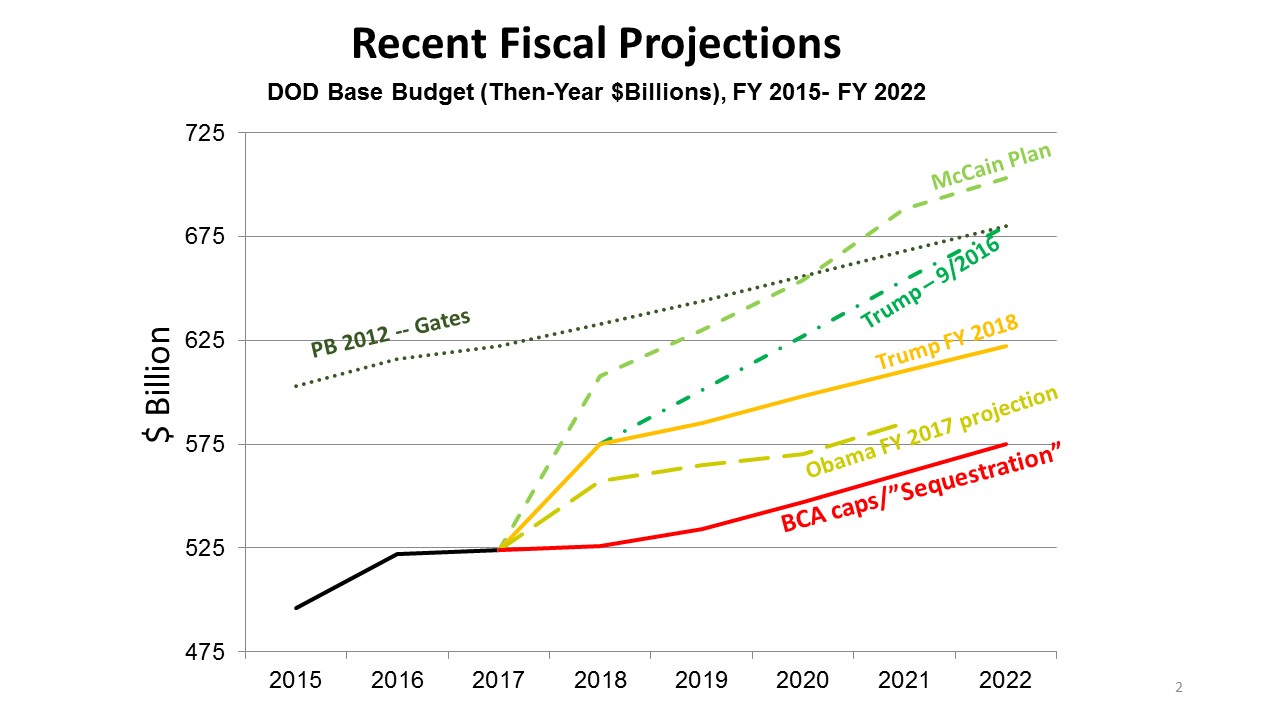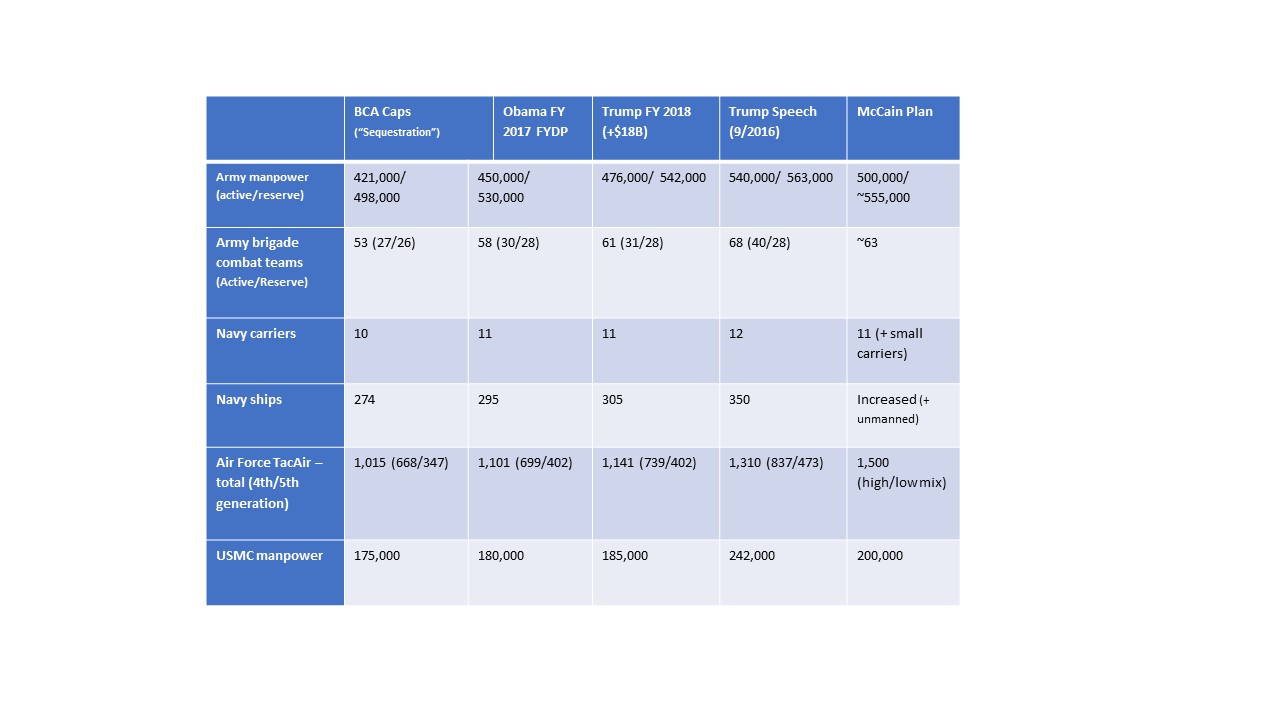The defense community is abuzz with talk of strategy and force expansion as the Pentagon develops the Trump Administration’s National Security Strategy. Talk is nice but, as budgeteers like to say, “If it ain’t funded, it ain’t”.
Building the forces the services say they need—with the readiness and modernization to support them— requires large budgets, such as those proposed by Sen. John McCain. Defense
as the required level. But political gridlock, the enduring drag of the Budget Control Act, and the history of budget compromises will conspire to prevent DOD from getting that much. The Pentagon will need to make some tough trade-offs.
showed what these tradeoffs look like, and it’s going to disappoint a lot of people.
First let’s consider the future of defense spending.
, the future is highly uncertain. The chart below shows the wide range of projection and proposals.
The solid black line is the enacted budget level. The other lines are different budget projections.
“Gates 2012” is the budget projection before the cuts imposed by the Budget Control Act of 2011. Then-Secretary Gates regarded it as the minimum required to execute the strategy, and defense hawks often refer to it as a goal.
“McCain plan” reflects the build up that the chairman of the Senate Armed Services Committee proposed in January 2017 and which is embodied in the Senate’s National Defense Authorization Act.
“Trump 9/2016” is the fiscal level implied by the president’s September 2016 speech in which, as a candidate, he proposed a greatly expanded force structure.
“Trump +$18B” is the Trump administration’s projection in the fiscal 2018 budget, an $18 billion increase over what the Obama administration had projected. (
, but that used the Budget Control Act level as a baseline.) The Defense Department was emphatic that
that would be changed as a result of the administration’s strategic reviews. In theory it could go higher. However, it represents budget “facts on the ground”, and the department must appeal to OMB for more resources. (Note: Cancian used to be the OMB person who said no to the Pentagon.)
“Obama 2017” is the Obama administration’s last projection.
“BCA caps” (also known as sequestration) were established by the Budget Control Act of 2011. Successive budget compromises have modified the caps, but their continued existence puts a damper on any defense buildup.
What do these different budget levels mean for force levels? The table below links forces to budget levels, using the CSIS Force Cost Calculator where the original source did not specify forces.


